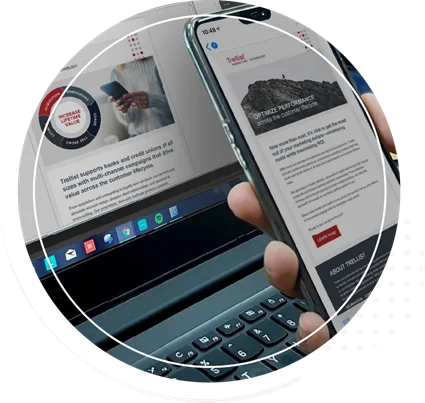By now you've probably heard of community management on social media, but what is it, and why does it matter to a brand's success?
In simple terms, community management is the work of building authentic relationships through meaningful interactions on Facebook, Twitter, LinkedIn, Instagram, etc.—both publicly, through comments and tweets, and privately, through messages.
The person tasked with this is the Community Manager, and it's a complex and demanding job. Community Managers have more responsibilities than just scheduling posts and replying to comments and messages. They are accountable for managing a brand's reputation on the social channel through their interactions with followers. They must build and maintain a strong community by engaging customers and prospects using a humanized approach, while also serving as a trusted source of information about the brand.
More than ever, it's imperative that brands provide an exceptional online experience. With that in mind, here are four critical steps for community management success:
Step 1: Identify your audience
This may seem like a no-brainer, but often brands don't think critically about who they're engaging. You may have an exciting update or a thoughtful response to share, but until you've properly identified your audience, you won't reach your social media goals. Ask yourself: What age groups and genders are you trying to tap into, where are they located, and what are their interests? Before you publish your first piece of content, be sure the target audience you want to reach is actually on the platform. Start with the following:
- Pinpoint your typical customer or prospect.
- Leverage social listening to see what your target audience is saying.
- Determine the size of the audience.
- See who your competition is interacting with on various platforms.
Audience classification varies by channel. For example, Facebook audiences are typically based on users' likes and interests, whereas LinkedIn calculates by role, company description (industry), and member group affiliations. Both platforms have robust targeting, but they use different formulas. When identifying your audience, it's also crucial to measure social metrics such as likes, comments, shares, impressions, reach and link clicks, and track results frequently.
Step 2: Get to know your audience
Once you've identified your target group, pay attention to what they're saying and the sentiment of their comments and messages. If you hope to create an extraordinary customer experience, you have to listen to your audience. Monitor the positive, neutral, and negative comments and conversations that develop and ask yourself:
- What topics pique the interest of my audience?
- What gets them excited? (For example, pay attention to their use of emojis and reaction buttons—like, love, and surprise, for example—as a form of expression.)
- What upsets them? Are followers using an angry or sad reaction button? What is their overall tone when commenting, replying, or sending a message?
Step 3: Respond quickly
Always prioritize customer care and act quickly. Brands that succeed on social platforms engage with their audiences in as close to real time as possible. Social Service Level Agreement (SSLA) response times vary by channel, but it's up to the brand to set its own SSLA. Is your response time within the hour, within a 24-hour period, or within a week? Pick an interval and stick with it. Look at what other companies and brands are doing in the space to determine a benchmark for your own SSLA response times.
When and how should you respond? While it's important to engage with positive and neutral interactions when appropriate, the worst thing a brand can do is ignore or delete a negative comment. Respond with transparency, but keep it concise. Ask for more details via private message or take it offline by offering a phone number or an email address. Also keep in mind that when you respond to one comment publicly—whether on LinkedIn, Instagram, or Facebook—you're actually responding to all comments, and setting the tone and brand voice.
Above all, don't forget to be human! Remember, you're engaging with people. While your tone should be consistent and always on-brand, the feel of each platform varies slightly (Facebook is more personal, while LinkedIn is more professional). Keep that in mind when responding on different platforms. Regardless of your tone, be genuine. The last thing you want to do is come off as robotic or insincere.
Step 4: Build and retain relationships
Businesses build their credibility and reputations through strong, authentic relationships. Here are several tips for audience growth and retention:
- Build trust with your customers through meaningful and open interactions.
- Observe audience behaviors closely and engage appropriately.
- Create a genuine customer experience through transparency while maintaining brand integrity.
- Generate engagement by creating posts that will encourage others to join the conversation.
- Build a community and protect your brand through brand stories, posts, and direct messages.
- Analyze post performance to see what's resonating with the audience (and what's not).
- Be consistent with your tone and response time.
To succeed on social media, businesses need to develop community management strategies that support their brands and align with their marketing objectives. Remember, to build a resilient audience, you must be authentic, transparent, and human.
Trellist can help
Start building an engaged community today! Trellist offers customized community management packages that can help you deliver the brand personality and commitment that your customers expect. See how we can help.












